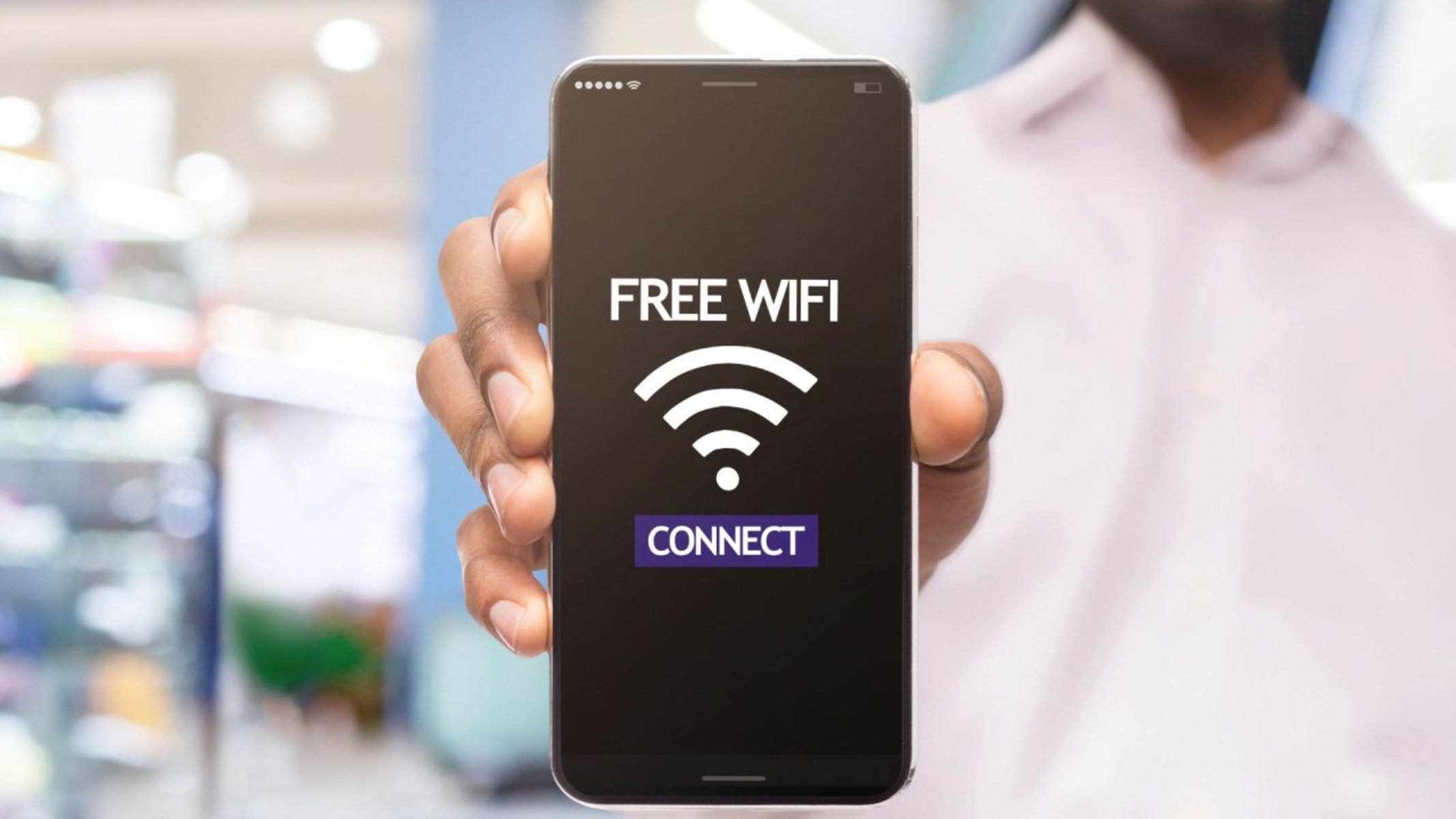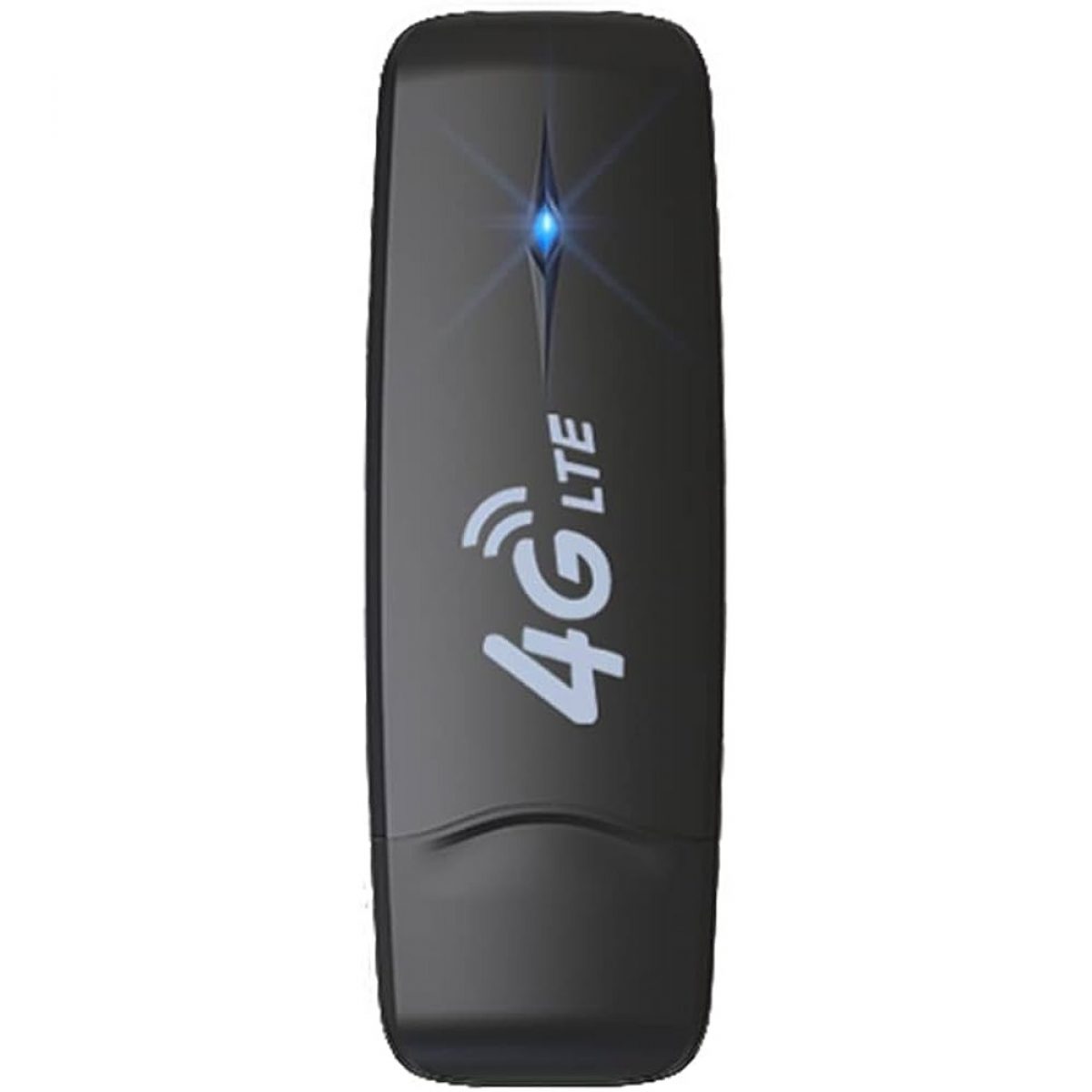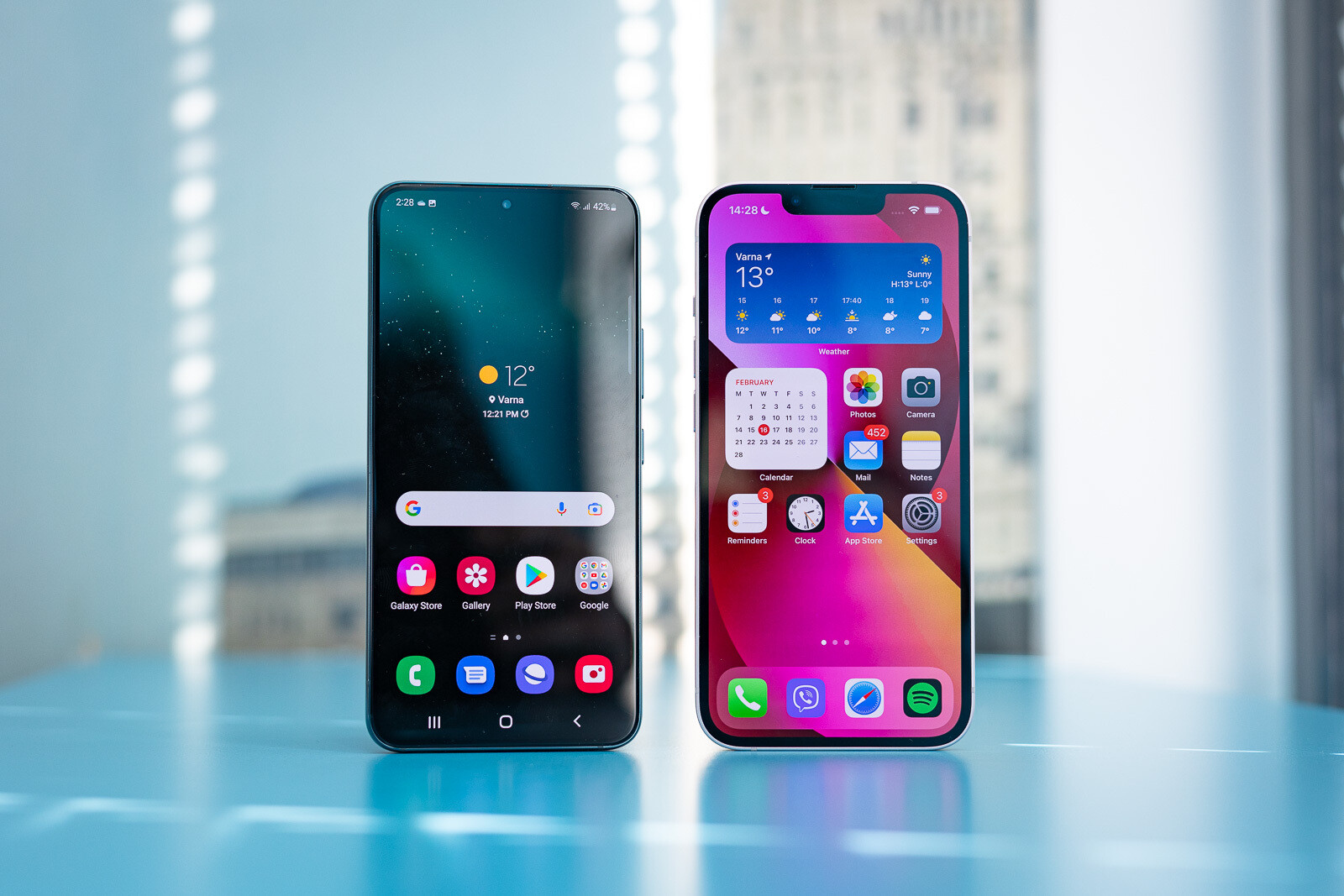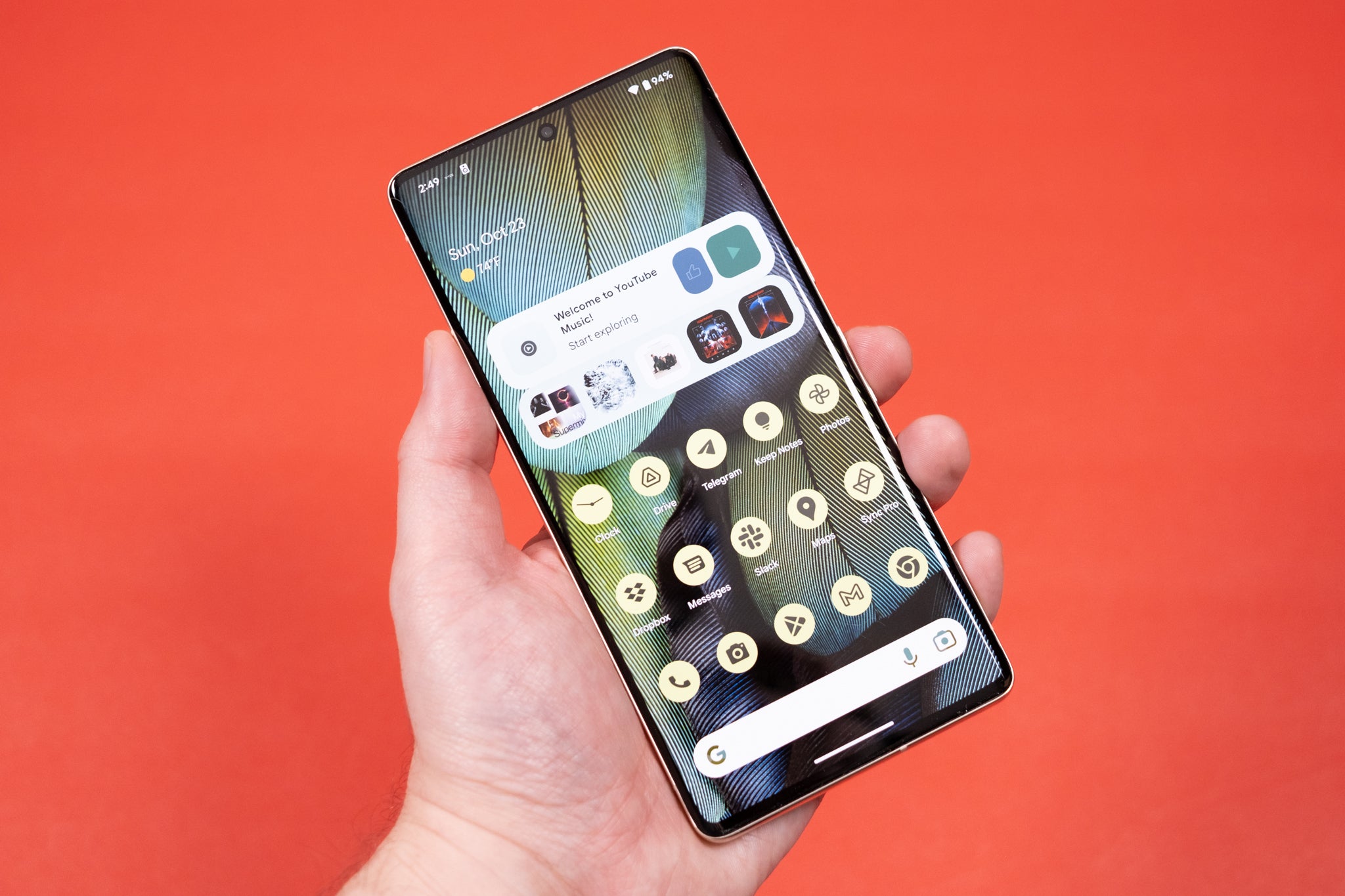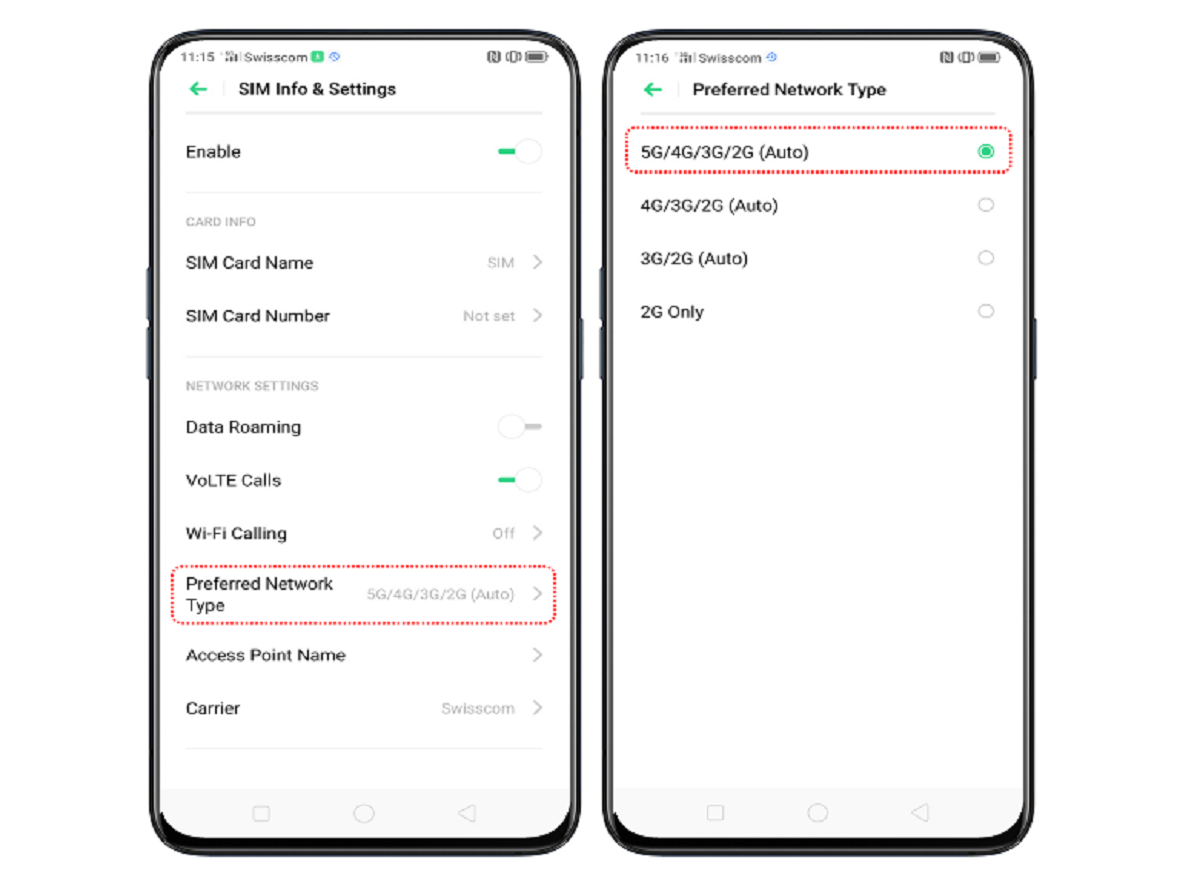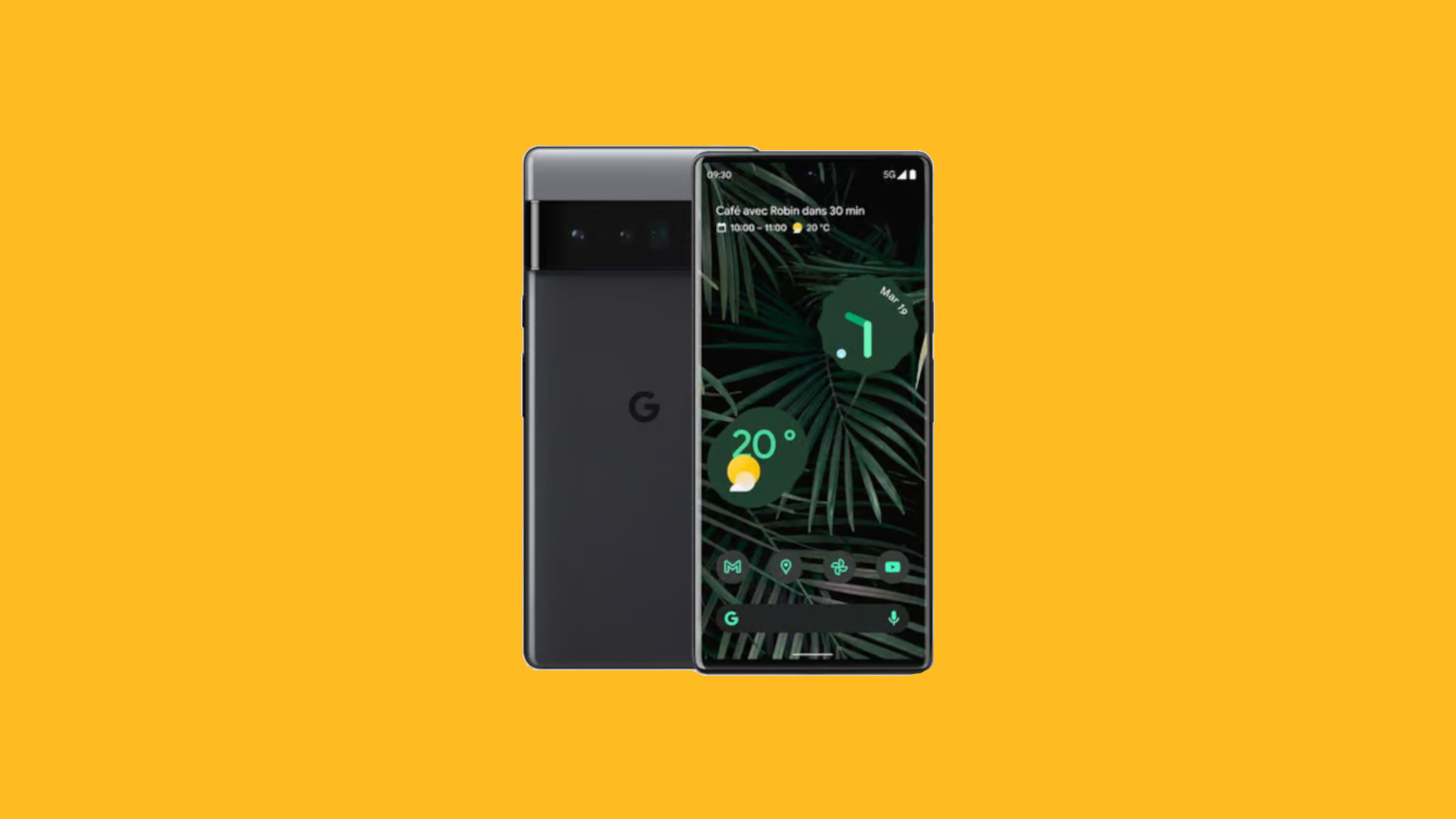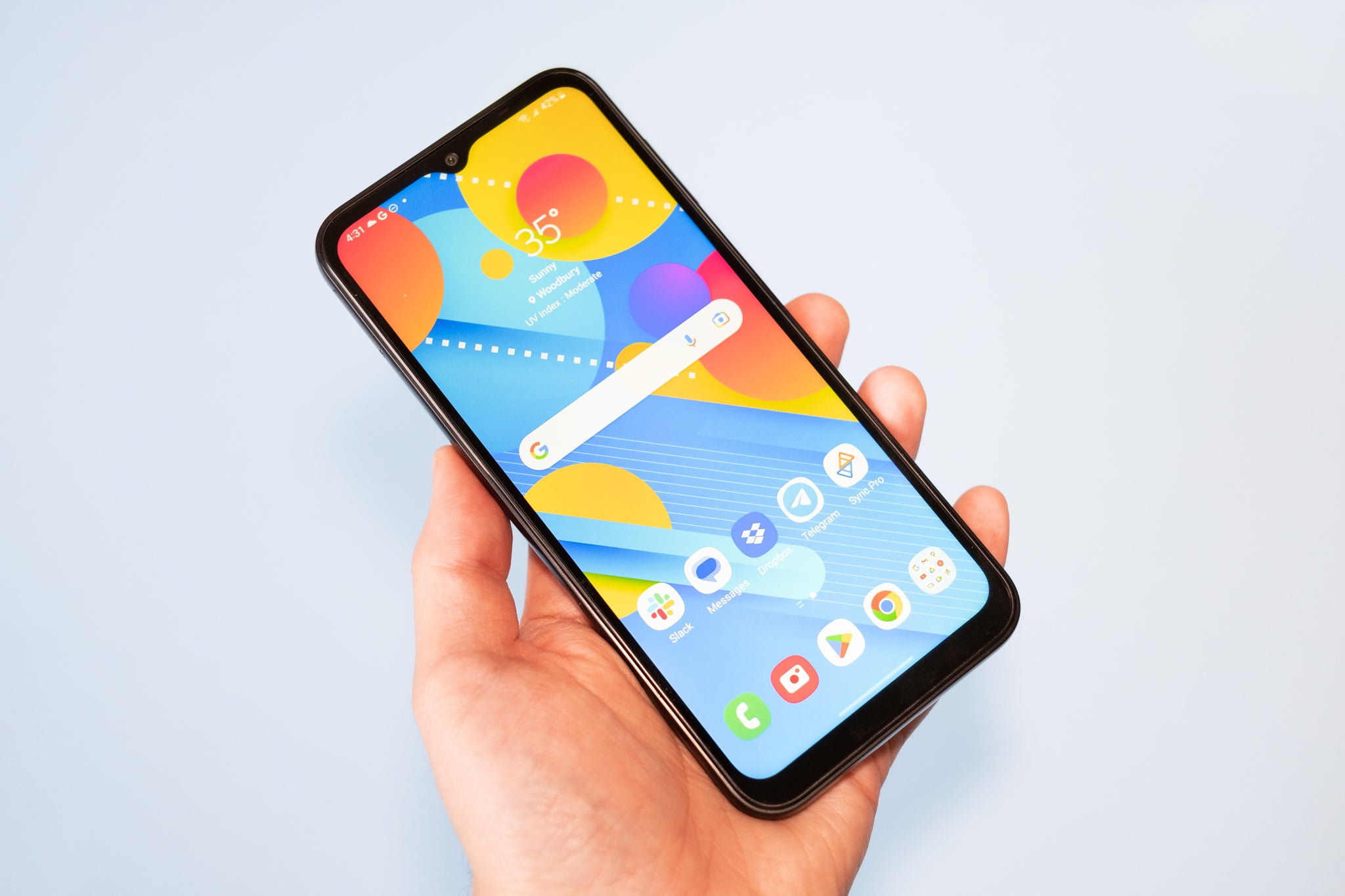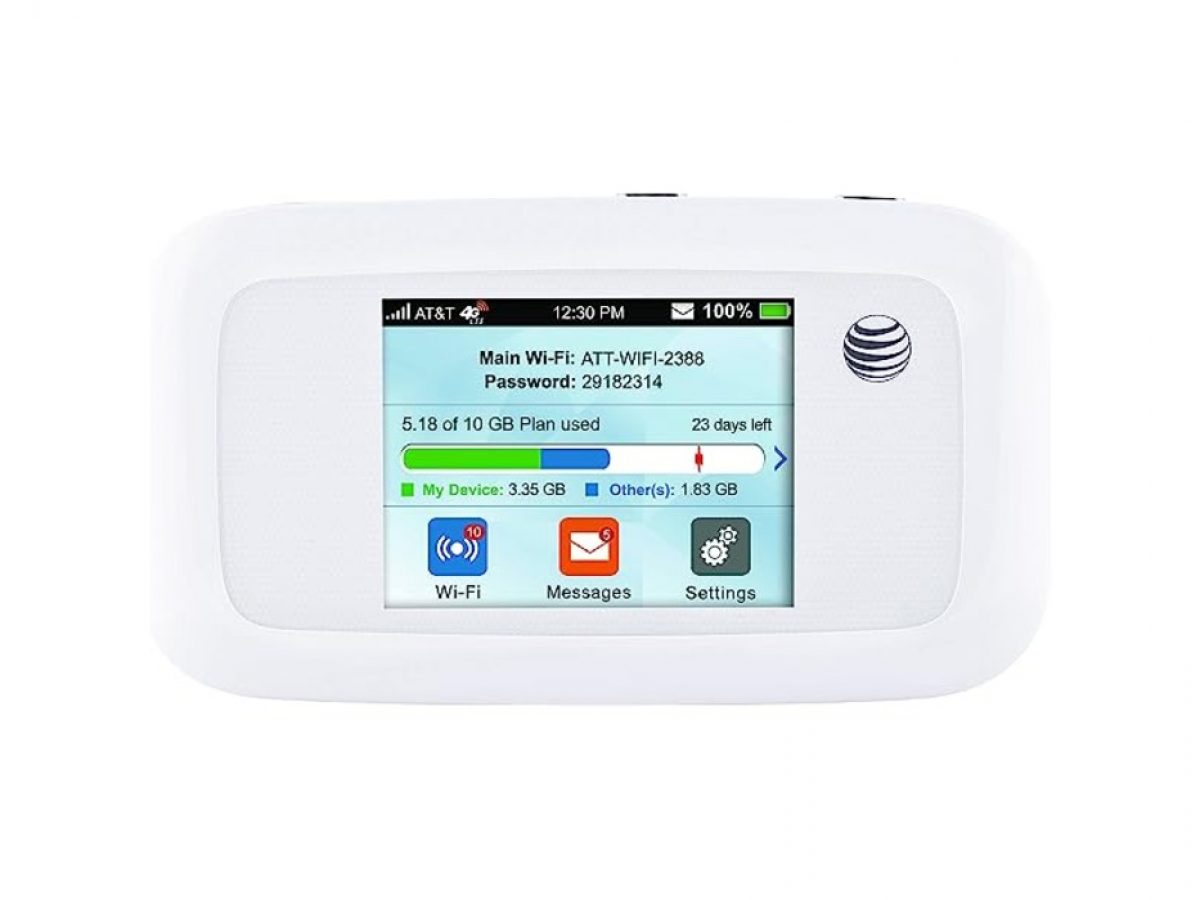Introduction
Smartphones have become an indispensable part of our lives, allowing us to stay connected, access information, and communicate with others on the go. But have you ever wondered how a smartphone is able to connect to the internet? In this article, we will explore the various ways through which a smartphone connects to the vast network of information and services that we rely on every day.
With the rapid advancements in technology, smartphones have evolved to incorporate multiple methods of internet connectivity. From wireless connections to cellular networks, Wi-Fi networks, Bluetooth connections, and even satellite connections, smartphones have a range of options to ensure that users can access the internet anytime, anywhere.
Understanding how a smartphone connects to the internet is essential not only for tech enthusiasts but also for the average smartphone user who wants to make the most out of their device’s capabilities. So, let’s dive into the fascinating world of smartphone internet connectivity and discover the technologies that make it all possible.
How Does a Smartphone Connect to the Internet?
A smartphone connects to the internet through various methods, depending on the availability of networks and user preferences. Let’s explore some of the most common ways through which a smartphone can establish an internet connection.
- Wireless Connections: Most smartphones have built-in support for wireless connections, allowing them to connect to nearby wireless routers or access points. This enables users to connect to the internet using Wi-Fi networks, which are widely available in homes, offices, cafes, and other public places.
- Cellular Networks: Smartphones are equipped with cellular radios that enable them to connect to cellular networks operated by mobile service providers. These networks, such as 4G LTE or 5G, provide internet connectivity over long distances, ensuring that users can stay connected even when they are outside the range of Wi-Fi networks.
- Wi-Fi Networks: In addition to connecting to Wi-Fi networks provided by routers or access points, smartphones can also act as Wi-Fi hotspots. This means that they can create a personal Wi-Fi network that other devices can connect to, allowing them to share the smartphone’s internet connection.
- Bluetooth Connections: While primarily used for wireless communication between devices, Bluetooth can also be used to connect a smartphone to the internet. This is achieved by pairing the smartphone with another device that has internet connectivity, such as a laptop or a tablet, and using that device’s internet connection.
- Satellite Connections: In remote areas where terrestrial networks are not available, smartphones can connect to the internet via satellite connections. Satellite phones or specialized smartphone accessories can establish a connection with satellites in orbit, providing internet access even in the most remote locations.
- Personal Hotspots: Some smartphones support the use of personal hotspot features, allowing them to share their cellular data connection with other devices. This is useful when there is no Wi-Fi or cellular network available, as it enables other devices to connect to the internet through the smartphone.
- VPN Connections: Virtual Private Network (VPN) apps can be installed on smartphones to establish a secure and encrypted connection to the internet. This not only protects the user’s privacy but also allows them to access restricted content or bypass network restrictions.
- Internet Service Providers (ISPs): When using a smartphone at home or in the office, it can connect to the internet through an Internet Service Provider (ISP). This is typically done by connecting the smartphone to a Wi-Fi router provided by the ISP, which then connects to the internet through a wired connection.
By utilizing one or more of these methods, a smartphone can establish a reliable and fast internet connection, ensuring that users can stay connected and access the wealth of information available on the internet.
Wireless Connections
One of the most common methods through which a smartphone connects to the internet is via wireless connections. Most smartphones are equipped with Wi-Fi capabilities, allowing them to connect to nearby wireless routers or access points.
Wireless connections provide several advantages for smartphone users. They offer faster internet speeds compared to cellular networks, especially when connected to high-speed Wi-Fi networks. Additionally, Wi-Fi connections are typically more stable and reliable, making them ideal for activities that require a consistent internet connection, such as streaming videos or downloading large files.
To connect to a Wi-Fi network, users need to ensure that their smartphone’s Wi-Fi feature is enabled. They can then scan for available networks and select the one they wish to connect to. In most cases, a password is required to establish the connection, ensuring that only authorized users can access the network.
Wireless connections are widely available in various settings, including homes, offices, cafes, airports, and public places. Many establishments provide free Wi-Fi access to their customers, allowing smartphone users to enjoy internet connectivity without incurring additional data charges.
When connected to a wireless network, smartphones can perform a wide range of online activities. Users can browse the internet, check emails, engage in social media, stream videos and music, play online games, and much more. The availability of wireless connections has greatly enhanced the convenience and productivity of smartphone users, enabling them to stay connected and access information from anywhere within the network’s range.
It is important to note that while wireless connections offer numerous benefits, they are also subject to limitations. The range of a wireless network is typically limited, and the connection quality may degrade over long distances or in areas with obstructions. Additionally, connecting to public Wi-Fi networks may pose security risks, as these networks are often unsecured and susceptible to unauthorized access.
To mitigate these risks, smartphone users are advised to connect to trusted and secure networks whenever possible. They can also take additional measures, such as using virtual private network (VPN) services, to encrypt their internet traffic and protect their privacy.
In summary, wireless connections play a vital role in allowing smartphones to connect to the internet. With the widespread availability of Wi-Fi networks, smartphone users can enjoy fast, stable, and convenient internet access in a variety of settings.
Cellular Networks
Cellular networks are another important method through which smartphones connect to the internet. These networks, operated by mobile service providers, allow smartphones to access the internet over long distances and in areas where Wi-Fi networks are unavailable.
The most common cellular networks used by smartphones today are 4G LTE (Long-Term Evolution) and 5G (Fifth Generation). These networks provide fast and reliable internet connections, enabling users to browse the web, stream media, and use data-intensive applications on their smartphones.
To connect to a cellular network, smartphones need to have a built-in cellular radio and an active SIM card provided by a mobile service provider. When the smartphone is powered on, it searches for available cellular networks in the vicinity. Once a network is identified and selected, the smartphone establishes a connection through a process called cellular network registration.
Cellular networks offer several advantages over Wi-Fi connections. Firstly, they offer wider coverage, allowing smartphones to connect to the internet even in remote areas where Wi-Fi networks are scarce. This is particularly beneficial for users who frequently travel or live in rural or suburban areas.
Secondly, cellular networks provide a continuous connection as smartphones can seamlessly switch between network towers as users move from one location to another. This allows for uninterrupted internet access while on the move, making it ideal for activities such as GPS navigation, online messaging, and real-time data syncing.
Another advantage of cellular networks is their ability to support voice calls alongside internet connectivity. Prior to the advent of smartphones, cellphones primarily served as devices for voice communication. With the integration of cellular networks in smartphones, users can now make voice calls, send text messages, and access the internet using a single device.
However, it is important to note that cellular networks are subject to data limits and data plans set by mobile service providers. Users need to be mindful of their data usage to avoid exceeding their monthly data allowance, which may result in additional charges or reduced internet speeds.
Overall, cellular networks play a crucial role in smartphone internet connectivity, providing wide coverage, continuous connection, and the ability for voice and data services. They are particularly useful when Wi-Fi networks are unavailable or when users are on the move, ensuring that smartphones can reliably access the internet anytime and anywhere.
Wi-Fi Networks
Wi-Fi networks are an essential method through which smartphones connect to the internet. Wi-Fi, short for “Wireless Fidelity,” enables smartphones to establish a wireless connection to nearby routers or access points that provide internet access.
When a smartphone connects to a Wi-Fi network, it gains access to a high-speed internet connection, which is especially beneficial for data-intensive activities such as streaming videos, downloading large files, or online gaming. Wi-Fi networks provide faster speeds compared to cellular networks, making them an attractive option for smartphone users.
To connect to a Wi-Fi network, a smartphone must have its Wi-Fi feature enabled. The smartphone then scans for available networks in the surrounding area, presenting a list of networks for the user to choose from. Upon selecting a network, the user may need to enter a password to establish the connection. Some networks may be open and require no password for access.
Wi-Fi networks are commonly found in various settings such as homes, offices, cafes, airports, and public places. Many establishments offer free Wi-Fi access to their customers as an added convenience. This ensures that smartphone users can stay connected and access the internet without incurring additional data charges.
One advantage of Wi-Fi networks is their range and coverage. Depending on the router’s power and antenna strength, Wi-Fi signals can reach a considerable distance, allowing users to connect from various rooms or even outside their homes. However, it is important to note that obstacles like walls and floors can weaken the Wi-Fi signal, so the connection might be stronger in closer proximity to the router.
Another advantage of Wi-Fi networks is their scalability. Multiple devices, such as smartphones, tablets, laptops, and smart home devices, can simultaneously connect to a single Wi-Fi network. This enables users to enjoy internet access from different devices without the need for individual cellular data plans for each device.
However, it is crucial to consider the security of Wi-Fi networks. Public or unsecured Wi-Fi networks may expose users to security risks, as these networks can be vulnerable to hacking or unauthorized access. It is advisable to connect to trusted and secure networks, ensuring that sensitive information and online activities are protected.
In summary, Wi-Fi networks provide fast and reliable internet connectivity to smartphones. They are widely available in various locations and offer scalability for multiple devices. By connecting to Wi-Fi networks, smartphone users can enjoy high-speed internet access for a wide range of activities while alleviating reliance on cellular networks and data plans.
Bluetooth Connections
Bluetooth connections provide another method for smartphones to connect to the internet. While primarily used for wireless communication between devices, Bluetooth technology can also be utilized to establish an internet connection.
Smartphones with Bluetooth capabilities can connect to other devices that have internet connectivity, such as laptops or tablets, and utilize their internet connection. This can be particularly useful when a smartphone does not have access to Wi-Fi or cellular networks, but there is another device nearby that does.
To establish a Bluetooth connection for internet access, the smartphone needs to be paired with the device providing internet connectivity. Once the pairing is established, the smartphone can share the device’s internet connection and access the internet as if it were connected directly.
Bluetooth connections provide a relatively short-range connection, typically up to 30 feet, making them suitable for use in close proximity to the internet-enabled device. This makes Bluetooth connections convenient for scenarios such as tethering a smartphone to a laptop while traveling or using a tablet’s internet connection on a smartphone.
One advantage of Bluetooth connections is the ease of pairing devices. The process often involves a simple verification or input of a passcode to establish a secure connection. Once paired, devices can automatically reconnect in the future, making it convenient for users to utilize the established internet connection.
However, it is important to note that Bluetooth connections may not provide the same speed and bandwidth as Wi-Fi or cellular networks. While Bluetooth technology has improved over the years, it is generally not optimized for high-speed data transfer. Therefore, it may not be ideal for activities that require large amounts of data, such as streaming high-definition videos or downloading large files.
In addition, Bluetooth connections are susceptible to interference from other devices operating in the same frequency range. This interference can affect the stability and reliability of the Bluetooth connection, potentially impacting the internet connection as well.
Overall, Bluetooth connections offer a convenient solution for smartphone users to access the internet by sharing the internet connection of nearby devices. While they may not provide the same speed and bandwidth as other methods, Bluetooth connections are useful in situations where Wi-Fi or cellular networks are not available or practical.
Satellite Connections
Satellite connections provide a unique method for smartphones to connect to the internet, especially in remote areas where traditional networks may not be available. By leveraging satellites in orbit around the Earth, smartphones can establish a connection to the internet regardless of their geographical location.
Satellite connections typically require specialized smartphones or accessories that are equipped with satellite communication capabilities. These devices communicate directly with satellites and establish a connection that enables internet access.
One of the advantages of satellite connections for smartphones is their global coverage. Regardless of whether the user is in a remote jungle, a desert, or at sea, as long as there is a clear line of sight to the satellite, it becomes possible to establish an internet connection. This makes satellite connections invaluable for individuals or groups who need reliable internet access in remote or disaster-stricken areas.
However, satellite connections do come with a few limitations. Since the smartphones or accessories need to communicate with satellites in space, there is a slight delay in the transmission of data. This delay, known as latency, can be noticeable during activities that require real-time communication, such as online gaming or video conferencing.
In addition, satellite connections can be affected by weather conditions. Heavy rain, snow, or intense cloud cover may obstruct the signal between the smartphone and the satellite, temporarily disrupting internet connectivity. The reliance on line-of-sight communication means that satellite connections may not work effectively in densely populated urban areas with tall buildings that obstruct the signal path.
Despite these limitations, satellite connections provide a vital lifeline for remote areas and those in need of reliable and uninterrupted internet access. They play a crucial role in communication during emergencies or in areas where establishing traditional network infrastructure is challenging or economically unfeasible.
It is worth noting that satellite connections for smartphones often require a separate subscription or service plan from a satellite service provider. This ensures that users have access to the satellite network and incur the associated costs.
In summary, satellite connections offer a unique method for smartphones to connect to the internet, especially in remote and underserved areas. They provide global coverage and reliable connectivity, making them indispensable tools for individuals and groups who rely on internet access in locations where traditional networks are limited or unavailable.
Personal Hotspots
A personal hotspot is a feature available on many smartphones that allows them to act as a Wi-Fi hotspot, providing internet connectivity to other devices. By utilizing their cellular data connection, smartphones with this feature can create a personal Wi-Fi network that other devices can connect to, effectively sharing their internet connection.
Personal hotspots are incredibly convenient in situations where there is no available Wi-Fi network or when multiple devices need internet access while on the go. For example, if you are traveling with a tablet or laptop and need to access the internet, you can enable the personal hotspot feature on your smartphone and connect your other devices to it.
To use the personal hotspot feature, you need to ensure that your smartphone has cellular data connectivity and the feature is enabled in the settings. Once activated, your smartphone will broadcast its own Wi-Fi network with a designated network name (SSID) and password. Other devices can then discover and connect to this network, effectively utilizing your smartphone’s internet connection.
It is essential to be mindful of your cellular data plan when using personal hotspots. Since the connected devices are using your smartphone’s cellular data, any data usage by those devices will count towards your data allowance. Heavy data usage from connected devices can quickly deplete your data quota, resulting in additional charges or reduced data speeds.
Furthermore, the speed and performance of your personal hotspot connection will depend on the strength of your smartphone’s cellular signal. If you are in an area with weak cellular coverage, your personal hotspot may experience slower internet speeds or intermittent connectivity.
Most modern smartphones offer the option to customize the personal hotspot settings, allowing you to manage and control the number of devices that can connect, as well as monitor data usage. These settings provide flexibility and enable you to optimize your personal hotspot experience.
Security is also a consideration when using personal hotspots. It is advisable to set a strong password for your hotspot network to prevent unauthorized access. Additionally, connecting to public Wi-Fi networks while using the personal hotspot feature is not recommended, as it can expose your connected devices to potential security risks.
In summary, personal hotspots are a valuable feature that enable smartphones to share their cellular data connection with other devices. They provide a convenient and flexible way to access the internet when no available Wi-Fi network is present, making them ideal for travelers, remote workers, and those in areas with limited connectivity options.
VPN Connections
A VPN (Virtual Private Network) connection is a popular method for enhancing security and privacy when connecting to the internet, and smartphones can also utilize this technology. VPN connections encrypt the data transmitted between the smartphone and the internet, ensuring that it is protected from unauthorized access and surveillance.
When a smartphone establishes a VPN connection, it creates a secure and encrypted tunnel between the device and a remote VPN server. This tunnel encrypts all internet traffic, making it difficult for hackers, ISPs (Internet Service Providers), or other malicious entities to intercept or access the data.
One of the main benefits of using a VPN connection on a smartphone is the enhanced privacy it offers. By masking the user’s IP address and encrypting their internet traffic, a VPN prevents their online activities from being tracked, providing anonymity and minimizing the risk of personal information or browsing habits being logged.
In addition to privacy, a VPN connection can also bypass geographical restrictions and censorship. By connecting to a VPN server located in a different region or country, smartphone users can access content and services that may be restricted or unavailable in their current location. This can be particularly useful when traveling or trying to access region-specific content.
Furthermore, VPN connections can provide an added layer of security when connecting to public Wi-Fi networks. Public Wi-Fi networks are often unencrypted and insecure, making them prime targets for hackers. By using a VPN on a smartphone, users can encrypt their internet traffic and protect their sensitive information, such as login credentials or personal data, from potential threats on the network.
Setting up a VPN connection on a smartphone is relatively straightforward. Many VPN providers offer dedicated apps for smartphones, allowing users to easily connect to their VPN servers and manage their connection settings. These apps often provide a range of server locations to choose from, as well as additional features like kill switches or split tunneling.
However, it is important to note that using a VPN connection on a smartphone may result in slightly slower internet speeds. The encryption and routing processes involved in VPN connections can introduce some overhead, which can affect the overall performance of the internet connection.
In summary, VPN connections offer increased privacy, security, and bypassing of geographical restrictions for smartphone users. By encrypting internet traffic and routing it through remote servers, VPNs provide enhanced online protection and anonymity. Utilizing a VPN connection on a smartphone is a valuable step towards ensuring a safer and more secure browsing experience.
Internet Service Providers (ISPs)
Internet Service Providers (ISPs) play a crucial role in connecting smartphones and other devices to the vast network of the internet. ISPs are companies that provide internet access to users through various technologies, such as DSL, cable, fiber-optic, or satellite connections.
When using a smartphone at home or in the office, it can connect to the internet through the ISP’s network. This is typically achieved by connecting the smartphone to a Wi-Fi router provided by the ISP, which then establishes a wired or wireless connection to the internet.
ISPs offer different types of internet plans, each with varying connection speeds and data allowances. Users can choose a plan that suits their needs, whether it’s for basic internet browsing, streaming videos, online gaming, or other data-intensive activities on their smartphones.
One advantage of connecting to the internet through an ISP is the typically higher speed and more stable connection compared to mobile networks or public Wi-Fi networks. ISPs generally provide faster internet speeds, especially with high-speed fiber-optic or cable connections, which can improve the browsing and streaming experience on smartphones.
Another benefit of using an ISP is the ability to bundle services. Many ISPs offer packages that combine internet access with other services, such as cable TV or phone services. This can provide cost savings and convenience for users who want to have multiple services from a single provider.
ISPs are also responsible for providing customer support and maintaining the network infrastructure. If users encounter any issues with their internet connection, they can contact their ISP for troubleshooting and assistance. ISPs work to ensure that their customers have a reliable and consistent internet connection, minimizing downtime and disruption to connectivity.
It is important for smartphone users to consider the terms and conditions of their ISP, including any data caps or bandwidth limitations. Some ISPs may impose limits on monthly data usage, and exceeding these limits may result in additional charges or reduced internet speeds. Understanding the terms of the internet service plan can help users manage their internet usage effectively.
Finally, users should also consider the availability of ISPs in their area. Depending on the region, certain ISPs may have a stronger presence and provide better coverage and speeds. It is advisable to research and compare different ISPs in the area to select the one that best meets the user’s needs and preferences.
In summary, ISPs play a vital role in connecting smartphones to the internet by providing fast and reliable internet access through various technologies. By selecting a suitable ISP and internet plan, smartphone users can enjoy seamless connectivity and a high-quality internet experience.
Conclusion
In today’s digital age, smartphones have become indispensable devices that keep us connected to the world around us. Understanding how a smartphone connects to the internet is essential for optimizing its capabilities and ensuring that we can access the vast amount of information and services available online.
We explored various methods through which a smartphone connects to the internet. Wireless connections, such as Wi-Fi networks, allow smartphones to connect to nearby routers or access points, providing faster speeds and convenience. Cellular networks, on the other hand, offer wide coverage and continuous connectivity, making it possible for smartphones to access the internet even in remote areas through mobile service providers.
Bluetooth connections enable smartphones to utilize another device’s internet connection in close proximity, providing internet access when Wi-Fi or cellular networks are not available. Satellite connections play a crucial role in providing global coverage, allowing smartphones to connect to the internet in remote or underserved areas where traditional networks are lacking.
Furthermore, personal hotspots on smartphones enable the sharing of cellular data connections, creating personal Wi-Fi networks that other devices can connect to. VPN connections offer enhanced security and privacy by encrypting internet traffic, making them invaluable for safeguarding personal information and bypassing restrictions.
Lastly, ISPs are instrumental in connecting smartphones to the internet, providing high-speed and stable connections through wired or wireless networks. ISPs offer different plans and bundles that cater to the diverse needs of smartphone users, ensuring reliable connectivity and customer support.
In conclusion, smartphones employ various methods for connecting to the internet, offering flexibility, convenience, and reliability. By understanding these different methods and selecting the most suitable one based on the situation, smartphone users can maximize their internet connectivity and enjoy a seamless online experience.







